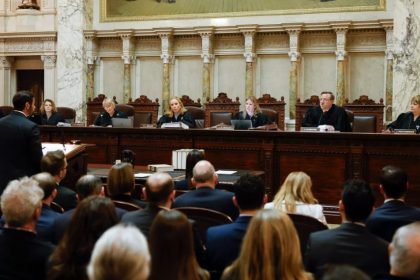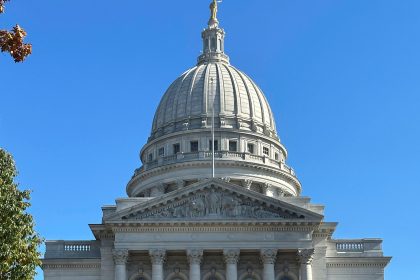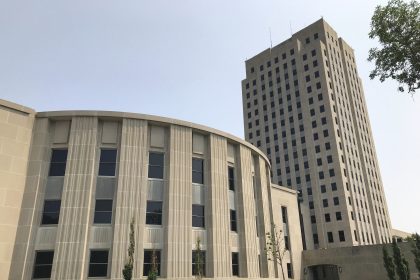Census Bureau to Release Redistricting Data Beginning Aug. 16

WASHINGTON — The Census Bureau will release redistricting data to the states in two formats beginning on Aug. 16. The first release will be geared for what the agency calls “experienced data users,” with a second, easier to use release of the same data planned for Sept. 30.
In a blog post on the Bureau’s website, acting Director Dr. Ron Jarmin blamed the COVID-19 pandemic for “significantly” delaying the processing of 2020 Census data, and said that since April, when apportionment results were released, several teams have been working to get the redistricting data ready for use.
“We understand these delays affect states that use our data, especially those under tight schedules for redistricting and upcoming elections,” Jarmin said.
“To provide some relief and to provide these data to all 50 states, the District of Columbia, and Puerto Rico as soon as possible, we’re providing the same data in two releases,” he said.
The Aug. 16 release will be in what the Census Bureau calls its “legacy format,” the format it has used for decades, with files made available through the agency’s ftp site.
On Sept. 30, the same data will be released in the far more user-friendly formats of DVDs and flash drives, and will also be made available through the Bureau’s data website.
Jarmin said the redistricting data will include the first demographic and housing data from the 2020 Census that allow us to see demographic and population changes around the nation.
The redistricting data will include:
- Housing unit counts;
- Occupancy status for housing units (occupied or vacant);
- Population totals;
- Population totals by race;
- Population totals by race and Hispanic/Latino origin;
- Voting-age population (age 18 and older) totals by race and Hispanic/Latino origin; and
- Population totals in group quarters by major group quarters type.
The Bureau will release these data for all 50 states, the Commonwealth of Puerto Rico, and the District of Columbia.
Within each, it will provide data for multiple geographies, such as:
- Counties;
- Townships;
- Cities;
- Voting districts;
- School districts;
- Tracts; and
- Census blocks.
Jarmin said because the redistricting data have demographic characteristics available for very small areas, it was essential the bureau take steps to protect data reported by or on behalf of individuals in the bureau’s published statistics.
The redistricting data will be the first 2020 Census data protected using differential privacy. This modern method protects individual information while letting us share important statistics about communities.
With these parameters, some small areas like census blocks may look “fuzzy,” meaning that the data for a particular block may not seem correct.
Importantly, the Census Bureau approach yields high quality data as users combine these “fuzzy” blocks to form more significant geographic units like census tracts, cities, voting districts, counties, and American Indian/Alaska Native tribal areas.
The calibration was designed to achieve acceptable quality thresholds for these levels of geography.
So, if one were looking at block-level data, they may notice situations like the following:
- Occupancy status doesn’t match population counts. Some blocks may show that the housing units are all occupied, but the population count is zero. Other blocks may show the reverse: the housing units are vacant, but the population count is greater than zero;
- Children appear to live alone. Some blocks may show a population count for people under age 18 but show no people age 18 and older;
- Households appear unusually large. For example, you may find blocks with 45 people, but only three housing units;
Though unusual, situations like these in the data help confirm that confidentiality is being protected, Jarmin said.
Noise in the block-level data will require a shift in how some data users typically approach using these census data.
Instead of looking for precision in an individual block, the bureau is “strongly” encouraging data users to aggregate, or group, blocks together. As blocks are grouped together, the fuzziness disappears. And when one steps back with more blocks in view, the details add together and make a sharp picture.
Jarmin said shortly after the August release of redistricting data, there are plans to release additional operational quality metrics to give further insight into “how we collected 2020 Census responses and what that might mean for the quality of the data.”
“Throughout data processing, we’ve been comparing the counts to benchmarks as part of our quality checks on the data. We have conducted one of the most comprehensive reviews in recent census history,” he said.
“As part of our review, we’ve had to contend with higher item nonresponse rates for characteristics than we’ve experienced in past censuses. This means while people were counted, some people left one or more questions blank, even if they completed most of the census questionnaire,” Jarmin said.
“We saw this for almost every variable in the questionnaire — age, sex, race, Hispanic origin, and whether the home is owned or rented. We saw this across the board regardless of whether the response was submitted online, by paper, over the phone or during in-person interviews with our enumerators. These blank responses left holes in the data which we had to fill. We’re still analyzing this and will share how we addressed this challenge in an upcoming blog,” he concluded.























